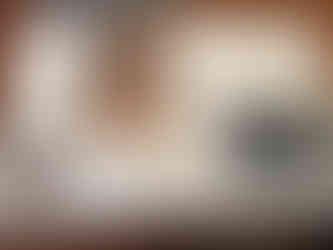editorial influences
- Lily Forbes

- Jan 7, 2019
- 3 min read
Updated: Feb 5, 2019
Pinterest board - https://www.pinterest.co.uk/lilyannaforbes/editorial/
KINFOLK
MUSHPIT MAGAZINE
Whilst at Beazley Designs of the Year at the Design Museum,I cam across Mushpit mag in the media category. I found the content hilarious, including interviews, mock-advertisements and extracts from iMessage conversations between mates. I loved the relatable, youth culture driven approach and the heavy feminist undertones. Handwriting and drawing are things I really liked within the magazine as well.
THE PLANT
Besides providing botanical content in a simple, personal and cozy way; The Plant offers plant lovers a new look at greenery by featuring the works of many creative people who share our love for plants.
FOAM
Foam Magazine is an international photography magazine published three times a year around a specific theme. The magazine serves as a platform for all kinds of photography: from documentary to fashion and contemporary to historic, featuring both world-renowned image makers and relatively unknown emerging talent. Each issue contains multiple portfolios printed on carefully considered paper. Interviews and opinions by experts in the field of photography are combined with surprising and distinctive editorial choices.
I love the experimental nature of Foam magazine. Using different paper stocks and every edition being hand bound/kettle stitched makes the photos within look their best. Using lots of variations of typography within each issue also helps to create a really interesting magazine design. I love the hand drawn aspects also.
ELEPHANT
Direct, spontaneous and multidisciplinary, Elephant surveys the international visual art scene in greater depth and with more energy than any other publication.
ART LICKS
A platform to promote the activities of London based artist led and grassroots projects to a broad public audience
In this publication I really like the serif body text and sans serif, thin font for titles, clear sectioning/chapters, header/footer/page number placement and the minimal colour use.
THE BLUE NOTEBOOK
A publication by UWE Bristol, a Journal for artists’ books. 'We welcome submissions of writing on contemporary artists’ books for The Blue Notebook.' This issue is about a conference called poetry and the artist book.
The artist book is a flexible vehicle for collaborative research, a form that can act as a common ground for multiple creative practices. Creative publishing has a long relationship with poetry - and there are many crossovers between visual poetry and text art, both of which are instances of the actual writer engaging with the page visually, or the artist performing their own text.
I like the simplicity of this magazine, the black and white printing and clear, readable text. The main thing that grabbed my attention from the publication was the concept however, using a magazine format to discuss the formation of artist books and poetry.
ARCHITECTURE + URBANISM
OASE
Journal for architecture. Interesting to see a design publication all printed monotone. I really like where the grid lines lie and integration of photos within text/over edges of print
CRAFTS
MONUMENT
Kettle stitch bound and offset litho printed, the materials and grid setups in Monument make for a really readable yet beautiful magazine.
Magculture
The range of creativity at Magculture was really inspiring. Particularly the binding techniques and added extras such as magazines sold in sleeves/vacuum packed like above. I also discovered this magazine ...
BENJI KNEWMAN
Benji Knewman is a man, around 42 years old. He’s trying to be genuine, and it seems he sometimes manages. Just like his grandfather who used to say: “Ben, how you spend your day is how you spend your life!” Currently Benji Knewman is more everywhere than anywhere. Mostly on the road. He’s still in search of his own perfect day. While looking for it, he curates a biannual bookazine telling stories about people who don’t pretend and who can simply be. Covering a myriad of vocations and lifestyles, as well as geographical locations, they’re living proof that you don’t have to be conventional to have a good life. In the end, everything is going to be great.
Journalistic, approachable and really gripping to read, Benji Knewman has been a huge inspiration to me for the project. I also really like the design, using a limited palette and typefaces to create a really recognisable yet interesting style.
The Design Museum















































































































Comments